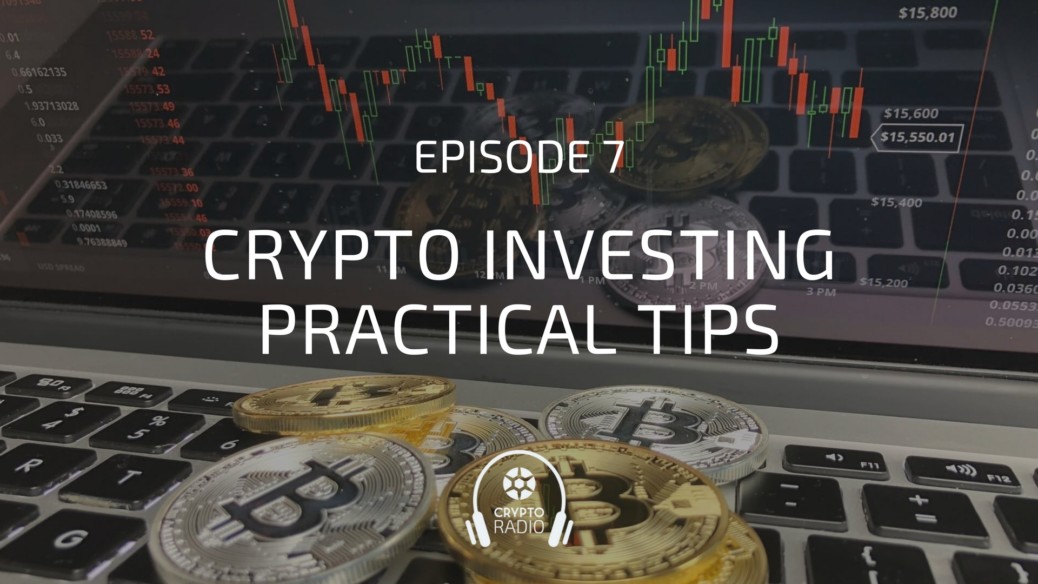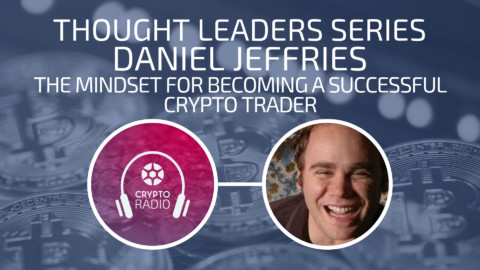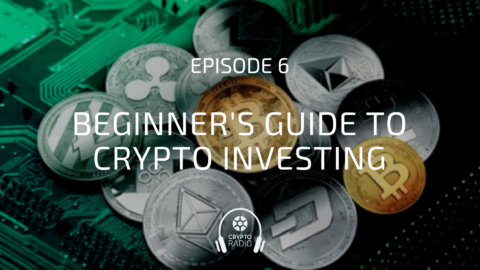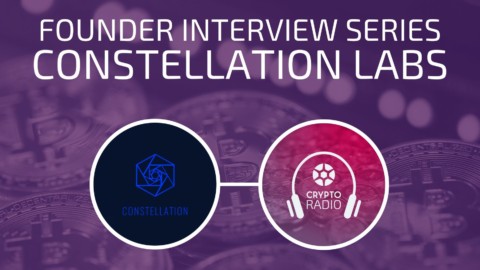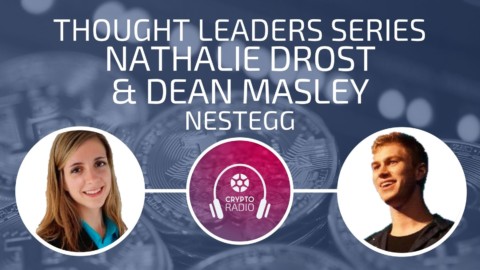Podcast: Play in new window | Download
Euvie: [00:00:30] We’ve now had a couple of episodes talking the background of how cryptocurrencies work. We’ve talked about why people would want to invest in cryptocurrencies and we’ve also talked about the broad level overview of how to think about cryptocurrency investing. So, in this episode, why don’t we get into some of the more practical steps of, let’s say, people have heard all of this information, they feel like they’re now ready to get started. What do they actually need to do to get started with this on a practical level?
Michael: [00:01:00] Yeah, it’s a great question. I think, I said it before, there are some technical complexities with this. So, it might help to have someone who’s quite computer savvy to help you set this up, if you’re not a techy person. There are some basic exchanges that are more simple to use. But ultimately, what you have to do is find an exchange where you can, first of all, buy Bitcoin or Ethereum because these are the currencies that people use to buy everything else. So, that’s the first step and if you look on where you’re based, where your country is, you’ll find there’s different exchanges for you.
So, for you, as investors, they have certain exchanges. For British investors there’s different exchanges. [00:01:30] I think Coinbase is the most well known one, and there’s tons of sign ups every day from new people getting in. So, that’s a good place to start. It’s quite user friendly. And there’s also the differentiation between Fiat exchanges, where you can actually connect your bank account, and then there’s other exchanges which are purely crypto exchanges. So, those ones you have to put Bitcoin and Ethereum on to be able to buy anything, you can’t put in dollars or any Fiat currency.
So, the first step is always to find one that lets you actually connect your bank account, make a deposit, and then from there buy your Bitcoin and Ethereum. That’s the first step. So, a good website is [00:02:00] buybitcoinworldwide.com, there’s a few other ones out there but that’s one where you can look up where you’re based and it’ll show you the list of exchanges where you can actually register an account. So, that’s the first thing. And always, always, when you’re starting out with any new process like this, test with very small money because this technology is all very new. You hear lots of stories of people losing their Bitcoin or money getting lost because they didn’t really understand where to send it to or how it works.
So, this is not like a normal bank account, you can’t call up a customer support line. So, when you’re testing this stuff out, you always start with $5, $10 [00:02:30] just to get your hands in it and just figure out how this all works. But yeah, you would want to register on an exchange, you want to connect your bank account. You normally need to do some kind of KYC now, which is verifying your account if you want to buy higher amounts. So, uploading your passport, things like that.
The exchange will guide you on what those steps are. Activating your two-factor authentication for security, so your account doesn’t get hacked. And then start to do very, very small test transactions just to make sure you understand where the money’s going, how it’s getting received. Once you’re happy and familiar with that, you can obviously buy more up to whatever amount you feel comfortable. And then from there you can dig into investing [00:03:00] in other projects, like other alt coins and other ICOs.
Mike: I think it’s very important to reiterate that advice of test before every new currency that you’re investing in. If you’re just getting into Lite coin, you’ve got Lite coin on your exchange, or you want to buy some, test with a small amount. Do the same thing with Ether, same with Bitcoin. Because some of these currencies use different technology for the wallet and currency management, so you need to really think about that. Test, test, test, every single time.
Euvie: Yeah, so one thing that’s really different with how you buy and sell and send cryptocurrencies is that [00:03:30] you don’t just press a button that says, “Send one Bitcoin to this person.” You actually have to copy and paste a cryptographic hash, which is basically an address, of where you’re sending it to. And if you screw that up, it will get sent to the wrong address, or it won’t get executed, or it will get lost and you will never be able to recover it. So, this is why we’re saying test, because this technology is not yet user-friendly enough to pull that information automatically and put it into a nice interface [00:04:00] where all you have to do is press a button that says ‘send’. There’s a bit more to it.
Chris: I want to even take that one step further and just say every time I have a transaction that’s over a certain amount, like my threshold for risk, it’s an arbitrary number in my head. If I’m sending one Bitcoin at this point, then I want to actually test 0.1 Bitcoin before I make the entire transaction, just because I want to make sure absolutely that this is going to happen the way that it’s supposed to. [00:04:30] Because, just to be clear, you have at this point no recourse to recover your coins if you send them to the wrong address. Aside from making an attempt to contact the person that you accidently sent them to and somehow convincing them that they need to send them back.
That’s the only recourse that you have as somebody who screws this process up and, again, like Euvie said, it’s unfortunately so early on it’s not exactly user-friendly. There’s a lot of horror stories about people sending incredibly large amounts of Bitcoin to complete strangers [00:05:00] and losing them to those complete strangers, because you can’t get into contact with them. There’s no third party to facilitate that communication.
Mike: I think it’s really also important to reiterate the security measures that you can and probably should take when you’re getting started in this. Some people might say it’s overkill at the beginning, if you’re just putting in $10, $20, $30 or a couple hundred dollars. But I recommend every single person who asks that they get a hardware wallet, because that’s one of the safest ways you can manage your cryptocurrencies. Because [00:05:30] what you’re doing is externalizing those keys from your computer.
And without getting too deep into how this actually works, a lot of people say that you can go use the most malware infected computer on the planet, plug in a trezor or plug a nano ledger or any of these different hardware wallets, and make a completely safe transaction from one wallet to another and you’re not going to have any problems. It’s because part of that transaction is being managed on this external device that’s very difficult to hack. It’s very simple, it’s got very simple functionality. [00:06:00] It’s meant to do one thing and you can’t really mess with that device.
And there’s these added layers of security like you’ve got your code to access the wallet interface on your computer, and you look at your nano ledger, your external hardware wallet, and it will give you a scrambled code and you’ve got to actually click that in onto your computer. And it’s going to be scrambled every single time, so even if someone’s got malware on your computer, is watching your screen, is logging every single key stroke that you put into your computer, [00:06:30] it can’t tell what is being shown on this external device. So, you’re actually going to be safe when you enter in your code every single time. That’s the security measure that is given when you use a hardware wallet, and that’s why I recommend it. Because if you’re doing a software wallet you don’t have that same layer.
Michael: Yeah, I think we talked a bit about the technical and the security aspects, but in terms of how you then start investing I’m just going to freestyle and go back into it. In terms of what I would say after you’ve done the basic verification and set up on the exchange and you bought small amounts, you’re happy with the test transactions, [00:07:00] then you can start to research what other coins to buy. There’s a really good website that called coinmarketcap.com, and that will show you a list of all the cryptocurrencies that are actually trading by the market cap. So, you can look up Bitcoin, obviously, all the top 10, 20 we talked about that are like the blue-chip stocks essentially right now in the crypto space.
You can actually click on them to see the price, the market cap, go to the websites, check out the projects, check out the team and the road map. If you feel you want to invest in one of those you can go to the markets tab on coinmarketcap.com, and you can actually see the exchange where it’s trading. So, what you’ll need to do is [00:07:30] you’ll need to actually have an account on that exchange to be able to buy that coin. And so, some of the big coins, obviously, Bitcoin trades everywhere, but some of the big coins will be on four or five, six top exchanges, and you can register on any of those to get it.
So, you really want to understand where the coins are trading, and put your Bitcoin or Ethereum there to get the best price. Because wherever the highest trading volume is, typically, will have the best rates. If you are trading on a very small exchange, you might end up paying a slightly higher price for that coin than you want to with your Bitcoin or Ethereum. You’re always trying to find out [00:08:00], “How do I get the best price?” And you can look at coinmarketcap.com and go to the markets tab for that coin page, and actually see where is it trading, where is the trading volume, and then start to set up an account there. So, that’s the basic steps to start to buy into the other coins. But that’s once you’ve done all the research and, like I said, you’re really happy with the team and the project, you know how much you’re going to put in. Just that practical execution, that’s the next step.
Euvie: Yeah, and most people have accounts on many different exchanges, because they won’t have the same coins on all the exchanges. And, again, yeah, the prices vary and the trading [00:08:30] volume varies. So, you want to get registered on a bunch of different exchanges if you’re planning to get more than just Bitcoin and Ethereum.
Chris: Yeah, but only register on an exchange if that’s the only exchange holding or trading a coin that you want to get into. You don’t have to go out and start signing up for six exchanges at once.
Michael: Yeah, you find the coins you want first, you build your portfolio on paper once you understand the problems that are being solved, and then you look to actually, say, how to actually buy those coins, that’s the next step.
Euvie: And sometimes it takes a bit of time to get approved on these exchanges, [00:09:00] especially if you’re going to be buying or selling large volumes. So, you want to do that first, because exchanges will actually limit your withdrawals if you’re not verified. And this is a new problem, but I’ve definitely had that problem where you go on an exchange and then you deposit some Bitcoin and then you buy some other coin, and then you realize that you can’t withdraw it because you have to go through the verification process. And you have to upload your passport and sometimes they have to review it manually, [00:09:30] and it can take a couple weeks sometimes to make that happen, so you just have to wait.
Chris: I had a cracking verification process that took six weeks, and this is when Ethereum had its huge run in July 2017. Yeah, you can imagine the FOMO that was going on in my head at that time. Can we really quickly recap the steps that we’ve talked about so far for the sake of being able to simplify this for the audience?
Michael: Yeah, so I think we’ve covered how to start to analyse the market, in terms of the problems [00:10:00] being solved. Focus on a sector or an area you understand first and look there, and try and see what are the biggest problems being solved in the space because that’s where the most value is. And then, in terms of the practical parts, how to set up an exchange based on where the coins that are trading, the coins you actually want to buy. And, obviously, doing test transactions first and being very careful security to actually get started. Because this is all very new and, yeah, there’s no real support.
You’re going to have to figure all this stuff out on your own, and obviously we’re going to try to help as much as we can. And if you have other people that are maybe already buying cryptocurrencies, you can ask them for help to get you set up, as well. You probably [00:10:30] know someone at this point who already is investing in cryptos.
Chris: Okay. So, what’s next for the first-time investor?
Michael: I think once you have your portfolio on paper, you’ve started to set up exchange accounts and you’re actually starting to buy some of these coins, you also need to track the value of these coins like an investment to know how much they’re worth. Because all the time it’s very abstract, if you log into exchange or say you have this amount of coins, it’s worth this much in Bitcoin, but you maybe forgot how much you bought it for and all these kind of things. So, there’s a good website called cointracking.info, [00:11:00] and there’s other ones out there.
But that’s a good place you can put in to say, “Hey, I bought this price for this coin, on this day,” and then it will be able to track for you when you buy, when you sell, how much your returns are. And it’s good to have that awareness of how that portfolio is growing and evolving, because you may see, “Hey, this one’s doing really well, this one’s not. I’m going to change my strategy slightly.” You need to have that awareness to be able to measure something. If you can’t measure it, it’s very hard to know are you investing smart or not. And the ICO space is really tough to do that because these coins are not very liquid. It sometimes takes months before you get your coins back.
So, that’s a slightly harder [00:11:30] area to analyse your returns. But for most people they’re not going to be starting with ICOs, you shouldn’t really be unless you’re a professional investor. So, cointracking.info is good, there some other sort of tracker websites. Blockfolio is really good, there’s a mobile app for that one. You can put in the price of most coins that are trading on which exchange, because the price will obviously vary. So, you want to put in where the exchange that you actually bought it on. And then it will tell you what the price is. So, that will help you keep a very high level on your portfolio. You can check that and see how it’s doing, if you need to make any changes or if the price is moving.
In terms of when you start to buy these coins, it depends on your [00:12:00] strategy. For most people, they just long-term buy and hold. So, it doesn’t really matter when you buy if you’re going to look back a year or two from now, because I think the prices will be much higher. But if you are looking to get in and you want to try and get in at a good price, you have to be a bit careful because these coins are sometimes trading at all times high and the last thing you want is to buy something and then it has a big correction.
So, this gets into a bit more of the technical part of when is a good time to buy, because you might have a good coin on paper that you’re watching, but the prices are at all time highs. And if you buy it and the coin turns around, you can see a 30, 40, 50 percent [00:12:30] correction. That’s very, very normal in this market and it actually happens all the time. So, you’ve got to understand you’re investing something that’s very speculative, and even if it does turn around and go down it’s probably going to be okay in a year or two if you pick the right project but it’s better if you can just wait for it to correct.
So, what I do with most people that I’m helping with this is I say, “Find a project. Go look at the chart where it’s trading and wait for it to actually retrace and pull back.” And these pull back points you can use different technical analysis, I’m not going to get too technical because this is a certain class of investor that will understand what I’m talking about. But ultimately, you don’t want to be [00:13:00] buying at the highs like everyone else if you can help it. That’s not a great time to buy.
Chris: Okay. Maybe you could hit us with a couple of mistakes that you see people making quite frequently, then maybe some tips that you would have for first-time investors in the crypto space?
Michael: Yup, that’s a really good question. So, I think the main mistake I see people making is the same one they make with every other investment, which is they trade with their emotion and they don’t always use logic. So, when you’re hearing about CNBC talking about Lite coin trading and Ethereum trading [00:13:30] and you see it’s at the all-time highs, that’s not necessarily the best time to invest in something. This market is moving up so fast, that means there’ll always be big corrections. And I think it’s important to be patient and not let your emotions rule your trading, because that’s typically what people do is they buy the very high and then they just see it turn around and go down.
And now they’re down 30, 40 percent and they didn’t really understand why they bought, and suddenly they might think, “Cryptocurrencies are a scam,” or, “This was bad advice, I shouldn’t have done this.” And really what happened was you let your emotions rule you, and that’s the first big mistake you can make is you want to wait [00:14:00] for a good buying opportunity to get into a market. And if you do buy, you want to understand what your investment time frame is. That you’re not expecting to be a million overnight. But if your long-term investment timeframe is looking back one, two years, you’ll be very happy you got in now I think.
So, important to be patient, not expect crazy returns even though the market’s moving up, it can move down really quickly. To understand that part of your risk return and to position accordingly. So, people just jump in too much at the beginning without the education. Like I just said, 5,10 percent of your portfolio is more than enough for most people [00:14:30] to get very good returns. As long as you’re patient enough, you won’t be panicked out of positions just because they turn around, because of the volatility.
So, I think people are not used to the volatility in this type of investing. It is high-risk return, and you’ve got to be careful. You’ve got to start with the safe coins like Bitcoin, Ethereum that are generally going to hold their value, have less volatility before you get into some of the smaller coins and the ICOs, which are a lot more volatile and takes education, takes time to get there.
Chris: Right. So, basically, divorcing emotion from your decision-making repertoire. Remaining stoic in the face of [00:15:00] unprecedented volatility.
Euvie: One mistake that I see people make, and I’ve definitely made it myself, is when you respond to the market doing something and you expect to be able to take a certain action right away, for example, to buy or sell something. But actually, there are all these other things that you have to do before you can even take that action. For example, if you want to get into a coin that’s suddenly starting to make a rise but you’re not actually registered on any exchange that is trading that coin, [00:15:30] you first have to register and it can take some time to do that. And then, by the time you registered and done, then the coin maybe already had a correction or the condition of the market’s just not the same anymore.
So, you want to get prepared, first of all. So, this is why I actually would recommend that people do get registered on multiple exchanges even if they don’t plan to necessarily buy any specific coins there, I just think it’s useful [00:16:00] because I’ve had that problem before where I wanted to buy something but I could do it right away. Then I just went and registered on six different exchanges, it actually came in very handy when I wanted to suddenly make a purchase and I had to make that decision very quickly. I was already registered with a bunch of exchanges.
Another this is the transaction speed for some of these coins can be quite long, especially things like Bitcoin. So, generally I wouldn’t say that you should keep a lot of your money on exchanges, [00:16:30] it’s better to keep most of your money on hardware wallet. But it is a good idea to have a small amount of your portfolio on each exchange so that you can react quickly when the market starts going up or going down and you want to make a trade, if you are planning to do trading and not just holing. Because yeah, a Bitcoin transaction can take six hours sometimes, and by the time the six hours is up the market is already somewhere else. So, it is a good idea to be prepared [00:17:00] at to have a small amount for trading if that’s what you’re planning to do.
Michael: I think that, yeah, we want to differentiate between active and passive investing, this is another thing we should cover. So, I think Euvie’s definitely more of an active trader because she’s full time in a space, so she’s always looking for opportunities. That’s not going to be the profile for everyone. So, for most people just getting in, they probably have full time jobs, not much free time in the day. So, they are just looking to get into the market the easiest way possible, and they’re going to be pretty passive.
They’re not going to be jumping around with different trades all the time. So, there are good opportunities, [00:17:30] but it depends on your investment timeframe. If you are just trying to get in to hold positions, like Euvie was saying, you don’t need to have your money on the exchange, you can keep it in a hardware wallet. If you’re waiting for opportunities, like I was saying before, you’ve gone to coinmarketcap.com, you’ve identified the coins that you like and you find where you’re trading on the markets tab, and you open up those exchanges, you put a small amount in so you’re ready when it actually comes to a time when you want to buy you can buy.
You don’t have to wait like she’s saying, because that’s a big problem that there are slow transaction speeds, there is issues with bottle necks on exchanges. Not being ready, not being quick enough to be able to execute. So, you want to be able [00:18:00] to get that best price, if you can, when you’re ready to buy. But then once you’ve bought, you don’t need to keep that money on the exchange, you can put it off for your wallet. And for most people, that’s going to be how they’re using this opportunity. They’re not going to be so active initially.
Chris: There’s a lot of people I think making the transition from traditional investing. I think it’s worth covering what assumptions that they make that don’t necessarily hold true in crypto. What are some of the common mistakes that people make who are making that transition, [00:18:30] and what advice would you have for someone moving from traditional investing into crypto investing?
Michael: Well, traditional investing, I think you’re talking about stocks, that is probably the most relevant one. So, just like stocks, you can look at the market cap of these coins to work out the valuations. How overvalued or undervalued are they? You can also look at charts and technical analysis to see where buying opportunities might present themselves if you’ve found a good coin, you’re looking for a good entry, you can use charts just like traditional finance investing.
So, there are definitely a lot of similarities I think where the differences that lie are obviously [00:19:00] in the price of some of these coins. When they’re trading against Ethereum, Bitcoin, and not against US dollars, you need to become really familiar with what those prices represent, and those charts. So, for example, in Ethereum there’s actually two charts, right? There’s Ethereum trading against US dollars and then there’s Ethereum trading against Bitcoin. Those tend to be where the most volume is traded. So, you need to actually understand both those charts.
And that’s actually quite different from normal investing, where you just have a US dollar chart or the currency of your country. So, there’s definitely difference there. How to understand how Bitcoin is affecting the market, because [00:19:30] when Bitcoin is really moving it tends to slow down the growth of the other coins. And then when Bitcoin slows down, the other ones catch up and the money rotates. So, the capital flows in the space are also very different to other markets.
This is maybe a bit too advanced for most people here, but yeah, we’re talking about people who are already used to investing. So, the capital flows, the trends, and understanding what can affect the momentum of the market. It’s so new that you can get a lot of FUD and FOMO and this emotion. So, FUD is fear, uncertainty, and doubt. And that’s caused a lot of people to [00:20:00] sell off in panic. And then you have the FOMO, which is the fear of missing out, and this is what causes a lot of people to buy in at the top when they shouldn’t be. So, those emotions are really amplified, because the space is so new that you just get a lot more volatility.
So, I think normal assets don’t have this kind of volatility, and that’s the biggest difference that you really need to understand what you’re getting into and not put too much capital at risk. At least in the beginning, especially when you’re not familiar with it.
Chris: Are there any indicators in more traditional investing, for example stocks, that people are mistakenly applying [00:20:30] to the crypto market?
Euvie: That’s a good question, yup. So, I’ve noticed that a lot of stock traders have now moved into cryptocurrency trading, and they’re just looking at cryptocurrency charts from a technical analysis standpoint as if they were stocks. But there are actually so many more factors in crypto that don’t apply to stocks. Because the stock market was growing at a certain rate, and the cryptocurrency market is growing at a much faster rate I think. And there’s all this new money coming into the space, which is [00:21:00] completely screwing up traditional technical analysis.
And so, people are doing technical analysis and buying and selling at the points where they think the market’s going to turn, and they get completely screwed because there are other factors at play that they’re not paying attention to. For example, the new money flow is coming in based on different events, like around thanksgiving. A lot of people were talking to their families, and so all these new investors came into the space after thanksgiving and it just exploded the market and broke all the technical analysis charts.
Michael: Yeah, I think that [00:21:30] it being such a small asset class, half a trillion dollars, there’s so many things that can push the price around so much faster. Global stock markets are all very much aligned and correlated, so there’s like 50 trillion-dollars’ worth of stocks and there’s a lot more liquidity, obviously, right? So, there’s also a lot more known events, because the whole research space is more mature. You have Bloomberg Terminal, you have all these sort of data signals you can look at. It’s just a much more mature industry. With crypto markets, there’s a lot more inefficiencies.
So, you have a lot of arbitrage where the price of [00:22:00] Bitcoin is trading $1,000 higher sometimes in Korea or somewhere than in the US. And this just doesn’t happen in the stock market world. So, if you actually understand those opportunities there, you can actually make a lot of money. But, at the same time, you can see a mistake because you see a price somewhere and it’s actually not relevant to your exchange. So, you’ve got to be super aware of this stuff that is a varied market, there’s a lot of inefficiencies. There’s not as much liquidity, things can move around very violently and with volatility we don’t normally see in the stock markets. So, that can actually be a good thing, but if you’re not aware of it it can also catch you out.
Euvie: Yeah, another thing that I’ve seen happen is that [00:22:30] there’s sometimes not enough liquidity on certain exchanges, meaning that there’s just simply not enough coins in circulation on that exchange to be able to fulfil all the orders people set. So, if people set automatic orders like automatic sell orders, for example a stop loss order, and all of those stop loss orders get executed at the same time, it’s selling at the highest available market rate. But they’re all trying to sell at the same time and there’s simply not enough coins in circulation on that exchange to fulfil all those orders. [00:23:00] So, the price just dumps completely very, very low and people lose a lot of money as a result.
Michael: Yeah. That comes down to liquidity. And, again, this is more for professional investors than the average retail investor. But definitely, if you are trading on an exchange and you’re setting stops, you need to be aware that when the order volume is very thin then there’s some big events or some news flow that can move the price, the exchanges can’t handle that. And often, yeah, your stop will get executed way below where you set it, and you can lose a lot more than you thought you would by setting a stop. So, sometimes setting a stop is actually worse than not setting [00:23:30] a stop, which is the reverse of traditional finance.
Chris: Does anybody have anything else we need to talk about?
Euvie: Yeah, this is kind of a small thing, but this is a mistake that several of our friends have made is when you send money to an ICO, always send it from a wallet that you actually have keys to. This means that you never ever, ever, ever, ever, ever, ever send it from an exchange. You can send it from your hardware wallet or you can send it from your software wallet, [00:24:00] but it has to be a wallet you own. So, technically when you put money into an exchange, the exchange owns that money. They control that money and there’s just the trust that they will give it back to you when you pull it out, but you don’t technically own the keys.
Mike: The simple thing to remember: your keys your money, their keys their money.
Chris: Yup. And if you’re entrusting, which it’s not a good idea to trust an exchange with your money, these are start ups after all. If you’re trusting an exchange with your money, it’s no different than a bank. And you might as well [00:24:30] just go back to a bank and live in the stone age with everyone else.
Euvie: Yes, except a bank is much bigger than an exchange and has been around for much longer, and they’re more efficient at some of these customer service issues.
Chris: They have insurance, as well, in case. But the exchanges do not. Michael, I’d like to thank you again for being on the podcast today. And to everyone out there in podcast world, see you next time. [00:25:00]
This episode is part 7 of our introductory series to cryptocurrency & blockchain.
Practical steps to become a first-time crypto investor
In this episode we will cover:
- How to choose the cryptocurrency to invest to?
- How to register on a crypto exchange and connect it to your fiat bank account?
- Where to find a list of all exchanges and why you need to open accounts on multiple ones?
- Why you need to test small amounts of transactions before you make any investment?
- Why you need a hardware wallet, rather than keeping all your crypto on an exchange?
- Where to find the list of all trading coins and how to get the best price?
- How to track the value of the coins once you invested in them?
- What are the most common mistakes with crypto investing?
Resources:
- BuyBitcoinWorldwide – Bitcoin exchanges reviews and guides
- CoinMarketCap – List of trading cryptocurrencies by their market cap
- CoinTracking – Tracks the value of your coins
- CR06 – Beginner’s Guide to Crypto Investing
- Crypto Investing Glossary
- Crypto Radio Resources Page

